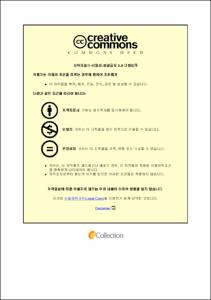Ulsan Univ. Repository
Thesis
General Graduate School
Computer Engineering & Information Technology
2. Theses (Ph.D)
RESEARCH ON CONSTELLATION DESIGN FOR VISIBLE LIGHT COMMUNICATION SYSTEMS
- Abstract
- Visible light communication (VLC) has emerged in the recent years as a new way to communicate using the existing lighting infrastructure. The reason for the attraction of VLC is that conventional radio frequency (RF)-based wireless communication has already arrived at a bottleneck because of the shortage of RF spectrum, the lim- ited potential to exploit, and high power consumption. VLC has great potential to provide high bandwidth and communication security, making it a strong alternative against conventional wireless communication techniques. Therefore, VLC is consid- ered as a potential access option for future fifth generation wireless communications due to its advantages. More specifically, VLC is a technology that takes full advan- tage of visible light-emitting diodes (LEDs) for the dual purpose of illumination and data communications at very high speeds and is a sustainable and green technology with the potential to revolutionize approaches to how we will use lights in the near future. Due to reusing the ubiquitous lighting infrastructure, VLC can provide an ad- ditional service at a comparably low extra cost. Then it has an unregulated spectrum, specifically from 400 to 800 THz, which provides a huge communication bandwidth to deliver license-free extremely high data rate services. Also, the VLC spectrum can be spatially reused in adjacent communication cells. Lastly, its narrow beam-width and line of sight (LOS) provide VLC with high secrecy and it has immunity to RF interference.
Signal constellation optimization is a well-known research topic, which dates back to the 60s. Although a number of different constellations have been proposed, not many have been considered in VLC systems, which contain some specific signal constraints. Therefore, the main objective of this thesis is to provide a treatment of the symbol designing problem for VLC from both reliability and energy efficiency points of view. In addition to the theoretical concepts, a substantial part of the thesis is devoted to the symbol designing problem, which is a signal design topic that aims at achieving low transmission error probability together with acceptable energy efficiency. Consequently, various problems and how to solve the optimization to achieve a good constellation with better performance are presented. All discussed algorithms involve the use of optimization software and theory of nonlinear optimization but nevertheless can deliver significant performance improvements, which is a very critical issue in the modern communication era.
- Issued Date
- 2022
- Awarded Date
- 2022-02
- Type
- dissertation
- Alternative Author(s)
- MANH LE-TRAN
- Affiliation
- 울산대학교
- Department
- 일반대학원 전기전자컴퓨터공학과
- Advisor
- 김성환
- Degree
- Doctor
- Publisher
- 울산대학교 일반대학원 전기전자컴퓨터공학과
- Language
- eng
- Rights
- 울산대학교 논문은 저작권에 의해 보호 받습니다.
- Appears in Collections:
- Computer Engineering & Information Technology > 2. Theses (Ph.D)
- 파일 목록
-
-
Download
 200000589801.pdf
기타 데이터 / 26.36 MB / Adobe PDF
200000589801.pdf
기타 데이터 / 26.36 MB / Adobe PDF
-
Items in Repository are protected by copyright, with all rights reserved, unless otherwise indicated.